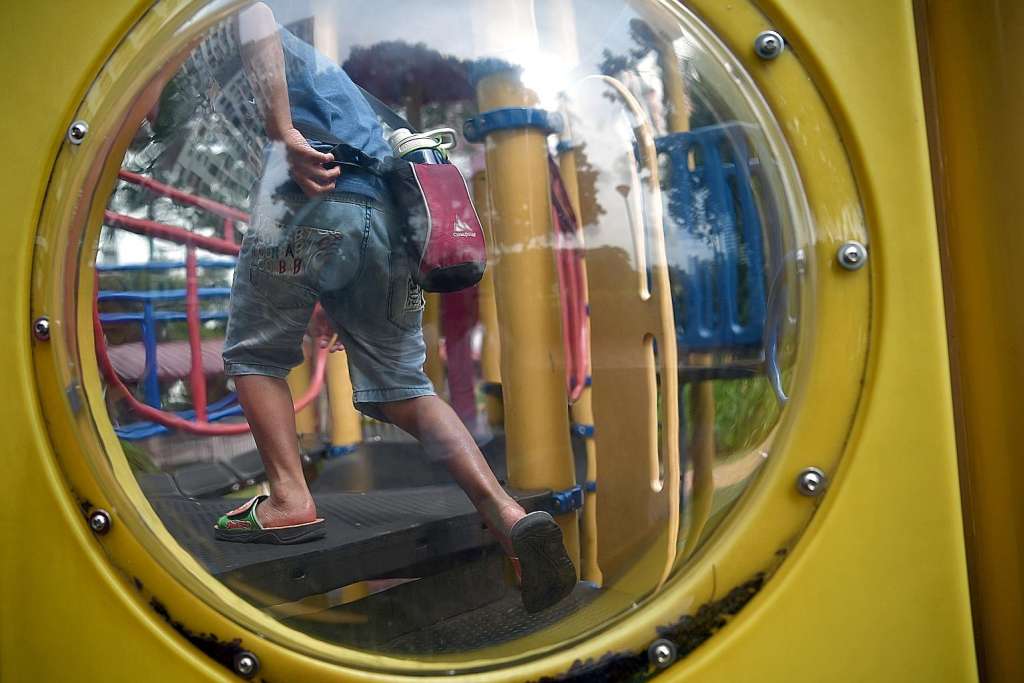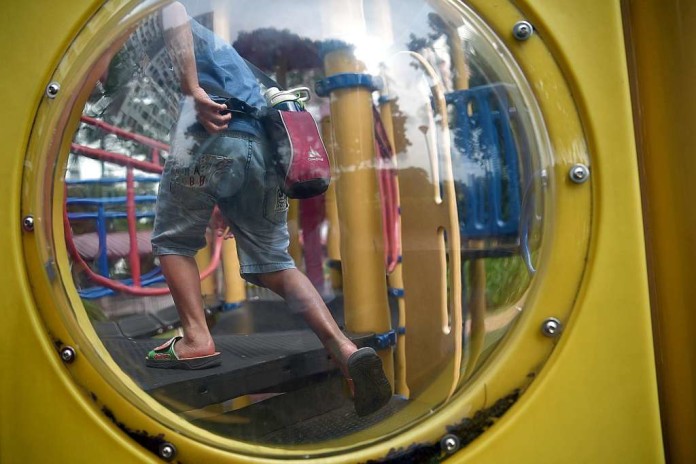When he was just seven, Javier Tan had a stem-cell transplant that was meant to save his life.
Instead, his body rejected it, and he developed a bone infection so severe that doctors thought he would lose his leg.
Finding another donor would normally have meant a wait of several more months.
Instead, he got one within weeks, and kept his leg, thanks to a novel transplant method that requires the donor to be only a 50 per cent – not 100 per cent – match. This meant that his parents, who had been ruled out before, became suitable donors.
Javier, who suffered from a rare genetic condition which caused his blood count to drop to dangerously low levels, needed a stem-cell transplant so his body could create new blood to save his life and fight the infection in his leg.
The conventional gold-standard treatment called for a complete human leukocyte antigen (HLA) match. HLA is a protein found on most cells used to match a patient and donor for bone marrow or cord blood – which contains stem cells. This time, though, doctors opted for a haploidentical transplant.
Here, specific immune cells – the T-cells responsible for attacking foreign bodies and in Javier’s case, the newly transplanted cells – were removed, so his body did not reject the second batch of stem cells from his father.
It was a success.
Javier, now nine, is a healthy Primary 3 pupil. He is among over 60 people here, from three public hospitals and a cancer centre, who have undergone the life-saving haploidentical transplant since it was introduced here about a decade ago.
The relatively new transplant method allows virtually anyone to have a suitable donor, said Dr Rajat Bhattacharyya, a consultant at the department of paediatric sub-specialities at KK Women’s and Children’s Hospital (KKH).
Since October 2014, doctors at KKH have treated four children with this method, two with rare immune disease, including Javier who suffered from Fanconi anaemia. The two others had cancer and bone marrow failure.
At the Singapore General Hospital (SGH), it has been used to treat about 10 adult patients since 2004, mostly those with leukaemia.
The National University Hospital (NUH), the first to successfully implement the procedure here for children, and with the largest number treated so far, has had 38 successful transplants on children since 2010, while the National University Cancer Institute, Singapore (NCIS) has done eight successful transplants on adults since 2011. Both mostly used the method to treat the blood cancer leukaemia.
The proportion of patients undergoing such transplants has risen at NCIS from 3 to 5 per cent in 2011 to about 10 to 15 per cent today. At NUH, the figure has risen from 20 per cent in 2012 to around 80 per cent since last year.
Without the new method, the chance of a parent being a match for his child is low, say doctors. So they have always turned to siblings, where there is a one in four chance of a match.
When that fails, the search is widened to unrelated donors, which means the wait for a perfect match can stretch many months. For people from minority ethnic groups, the search can be futile.
A haploidentical transplant provides hope for those patients who otherwise would have been unable to go through the procedure, noted Dr Frances Yeap, associate consultant at NUH’s division of paediatric haematology and oncology.
Recalling her son’s ordeal two years ago, Javier’s mother, Mrs Vivian Tan, 34, a project manager, said she had been at her wits’ end when doctors told her they might have to amputate his leg.
The transplant that took place in January last year with his father’s bone marrow was a success.
And after over a year out of school, Javier returned to his studies in May. He was recently awarded good progress awards in both English and Chinese, said Mrs Tan proudly. “I am definitely relieved and thankful that he has his health back,” she said.
Knowledge on problem cells reduces risk of death
Early attempts at haploidentical transplants – where the donor’s and recipient’s tissue types are not a perfect match – frequently ended in death, mainly because of graft versus host disease (GVHD) and graft rejection in transplantation.
In GVHD, the white blood cells in the donor’s stem cells attack the recipient’s tissue. In graft rejection, transplanted stem cells are destroyed by the donor’s body.
However, doctors now have knowledge about the specific cells that cause GVHD which have made half-matched transplants a reality.
Said Dr Rajat Bhattacharyya, a consultant at KK Women’s and Children’s Hospital’s department of paediatric sub-specialities: “With this knowledge, you can actually select and take out these cells.”
The process of removing the problematic cells using a machine takes just one day, and once the remaining cells are transplanted, it takes around 10 to 14 days for them to grow and start producing new cells in the patient’s body.
Dr Frances Yeap, associate consultant at the National University Hospital’s division of paediatric haematology and oncology, said another method is to administer chemotherapy drugs to patients to significantly reduce their T-cells – the immune cells which cause GVHD.
This was started by doctors in Johns Hopkins in the US and is very popular around the world, especially in countries where they do not have the set-up and facilities to do cell manipulation, she added.

This article was first published on Dec 11, 2016.
Get a copy of The Straits Times or go to straitstimes.com for more stories.







